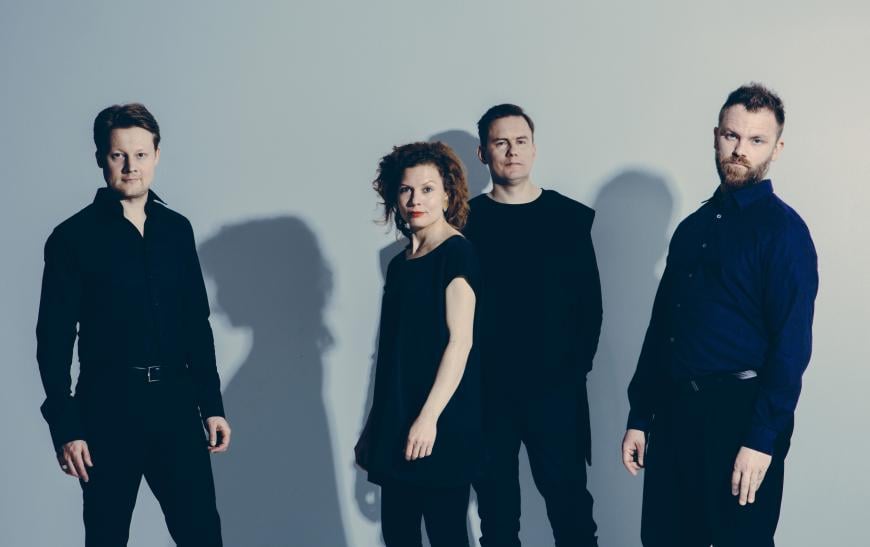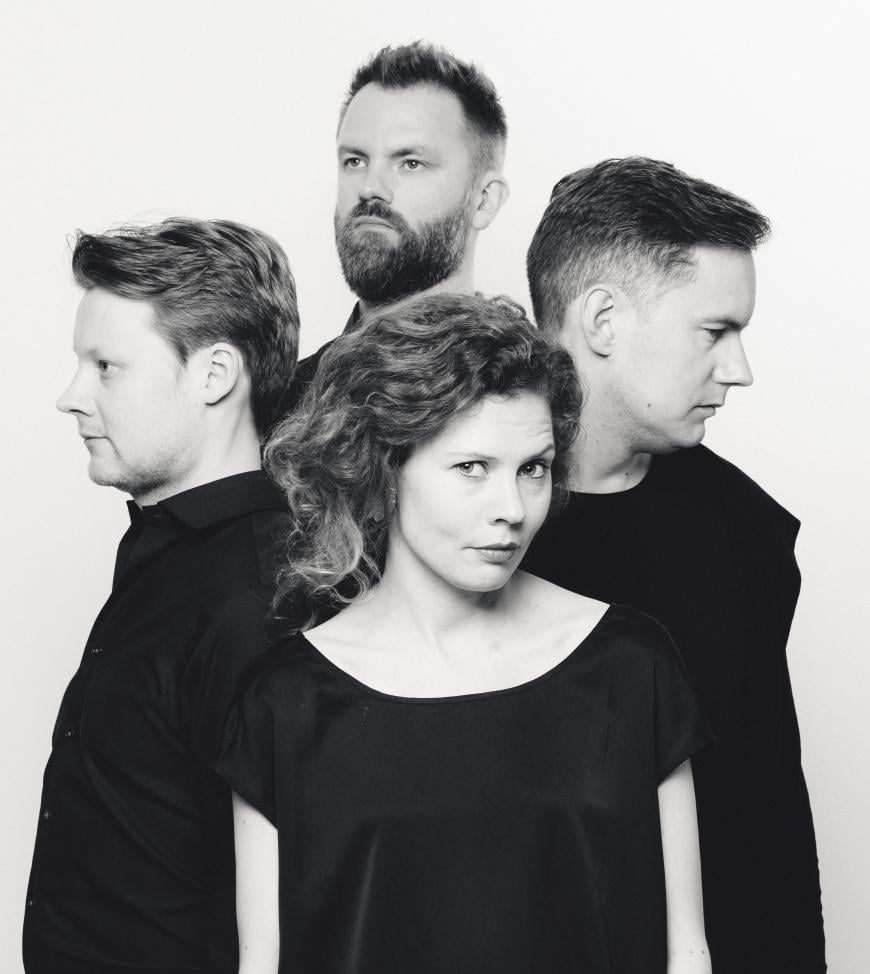
Meta4, a string quartet from Finland, made its first appearance in the Western U.S. on Saturday, Nov. 12. The venue was the Studio, a small cubical space tucked into the lower level of Bing Concert Hall at Stanford Live. The stage is in one corner; the audience was seated at cafe tables scattered throughout the room, though there was no cafe service. The lighting was dark and nearly impenetrable, even before and after the music. The concert was a single set of 90 minutes, which is a long time to be sitting without a break in not very comfortable chairs.
Because of its small size, the Studio has good acoustics despite its unpromising shape. The idea of holding classical concerts here is to provide a venue for more intimate performances than a larger space would allow. One is reminded of the literal meaning of the term “chamber music.” The chairs may have been itchy, but the music-making was fascinating.

The theme of the concert was music from the far north. That was what the early 20th-century American Amy Beach turned out to have in common with three composers from Finland. Beach’s one-movement String Quartet, Op. 89, a late work of hers from the 1920s, is based on songs of the Alaskan Inuit that she found in an anthropology book. One instrument, usually Atte Kilpeläinen’s viola, would play a melody, and then the other instruments would take it up in a modern but thoroughly tonal development style, far removed from the more indulgent romanticism of Beach’s earlier work. Some of this surged into fast energy — one melody immediately launches into a fugato — but the primary atmosphere was slow, quiet, and austere.
This mood was a good match for the preceding work, Fleurs de neige by Kaija Saariaho. Like the titular snowflakes, the music was delicate, fragmentary, and succinct, with hushed harmonics and other subdued colors. Notwithstanding its brevity, emotional reticence, and harmonic adventurousness, this is an immensely appealing piece, a most effective use of Saariaho’s talents and artistic inclinations.
A much longer work by Krishna Nagaraja continued the folk music theme after Beach. Titled Stringar after a southern Norwegian folk dance with music for Hardanger fiddle, this piece does not employ any actual Hardanger fiddles but does subject melodies and rhythms from that tradition to much variation and experimentation in a variety of idioms. The high-energy first movement inserts the folk material into a harmonically dissonant context. The rest of the work lets ghostly thematic fragments hang in the air with minimal framing or tosses phrases between the instruments in variations and alterations. As this goes on, the piece’s closest resemblance to folk music becomes clear; it’s more concerned with passing the time agreeably than in communicating cogent, developed musical thoughts.
Condensed cogency came in floods with the best-known work on the concert, Jean Sibelius’s String Quartet, Op. 56. This was, like the rest of the program, a dry and austere performance, devoid of romanticism. It was particularly successful at the stuttering notes in the Vivace scherzo. When the quartet was playing together — or even when only two instruments were together, especially Kilpeläinen’s viola and Minna Pensola’s second violin — the unity of voicing was astonishing, as if the musicians formed a single instrument. Yet when the players had separate lines, an image of distinct phrases passing each other in an otherwise silent space still seemed an appropriate perception.
Not every quartet could present such a thematically unified program while bringing out both the resemblances among the works and their variety of materials and presentations. Meta4 played a narrowly focused concert but a blisteringly intense one.

